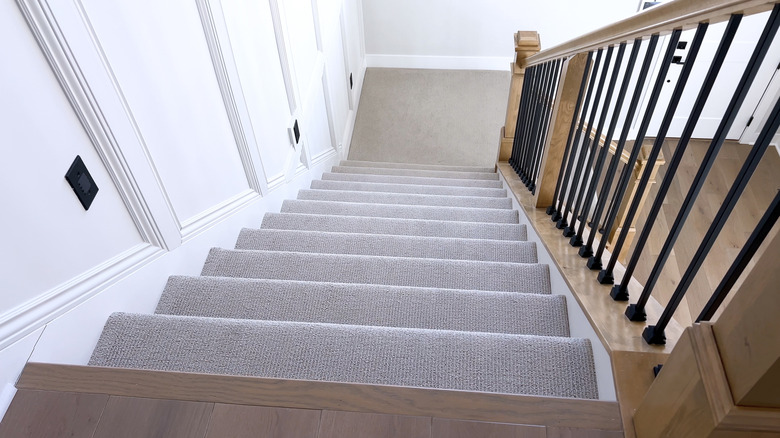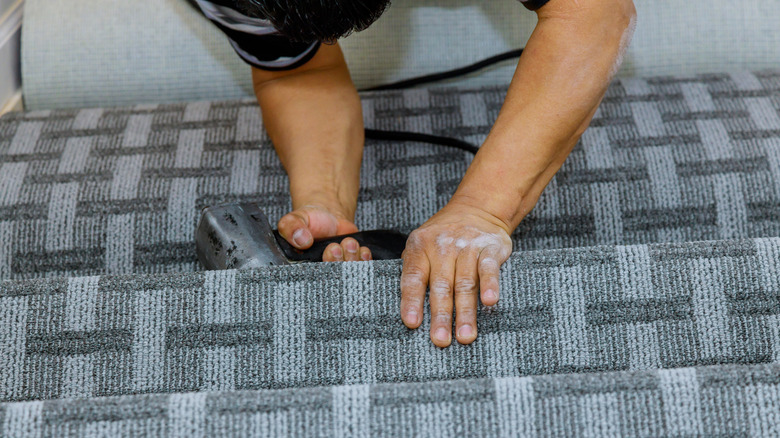Mistakes Everyone Makes When Installing Carpet On Stairs
While there are a number of staircase makeovers you can do with any budget, installing carpeting is one of the top choices. The right carpet, after all, can enhance the overall ambiance in your home and create a welcoming atmosphere for guests. But let's admit it, getting that flawless carpet installation on stairs can sometimes be complicated by common mistakes many people make. These include pre-installation issues like not properly cleaning the stairs and not placing tack strips in the right places, as well as not using the right measurements for materials such as the padding and stair runners.
What is thought to be a simple task can easily be derailed by these avoidable errors. Remember that adding carpet to your staircase does not only add warmth and style, but it also contributes to the safety of the stairs by providing traction on steps that could be slippery otherwise. A well-fitted carpet can prevent slips and falls from happening, which is especially crucial for those who live with kids or elderly family members. Carpeting on stairs can also protect the treads from wear and tear. If you've decided that carpeting on your stairs is the right choice for you, here's more on the three common mistakes people make during installation and how to avoid them.
Carpet mistakes and how to avoid them
The first most common mistake homeowners make when installing carpet on stairs is not cleaning the stairs thoroughly beforehand. This means leaving dirt and other debris untouched and proceeding to place down the carpet. Doing this could lead to bumps or imperfections that will affect the overall look of your stairs, especially when you are opting for a lighter-colored carpet. There's a specific way to properly clean each kind of staircase that typically involves vacuuming or sweeping and cleaning with a wet rag.
While there are people who don't forget to clean their bare stairs, there are also those who end up not placing tack strips in the right position. These strips help secure the carpet on the stairs and should be placed about ¼ to ½-inch away from the stair risers, which will provide room for the carpet to tuck into the space. The tacks should also lean away from the wall.
When it comes to the carpet itself, the most common errors mostly involve making the wrong measurement or cut. The paddings, or the soft cushions that are placed on each step, are often cut to fit the entire length of the stairs, which leads to not just an unsightly look but also the stairs being unsafe. These pads should just cover the treads, not the risers. Meanwhile, stair runners, or carpets that flow from the top to the bottom, are sometimes cut too short. It's crucial to keep in mind all the bends and creases when measuring the length of the runner or carpeting.

